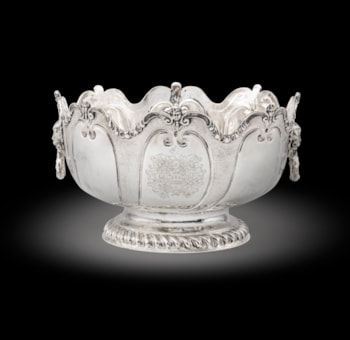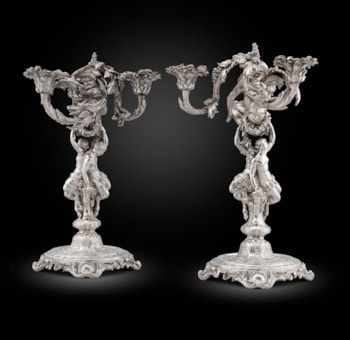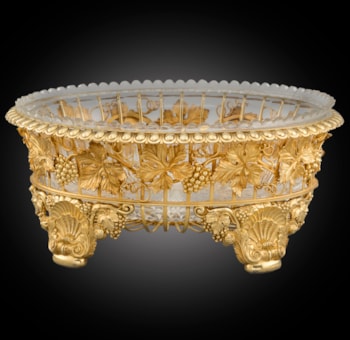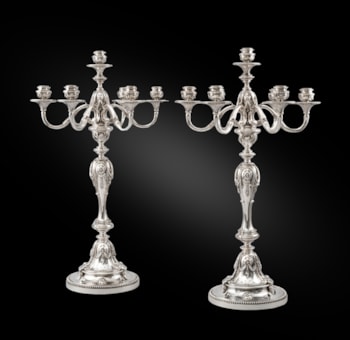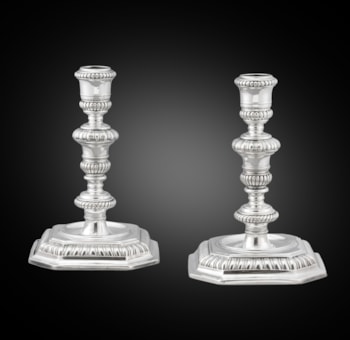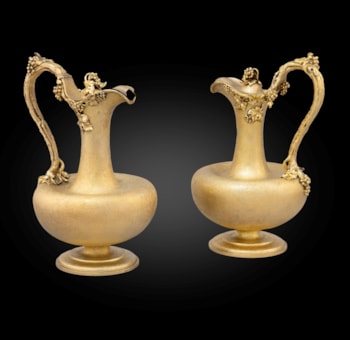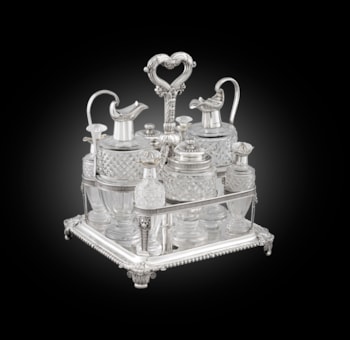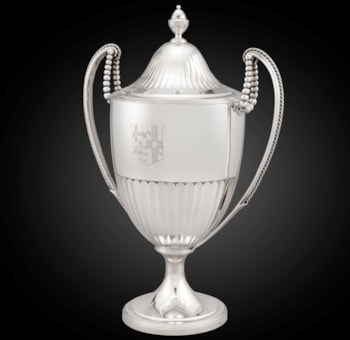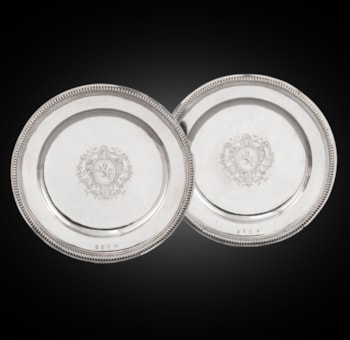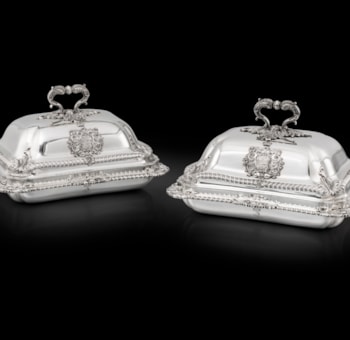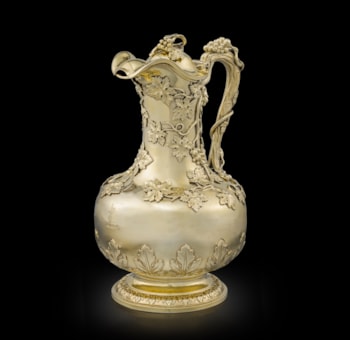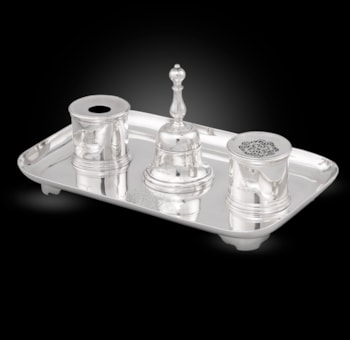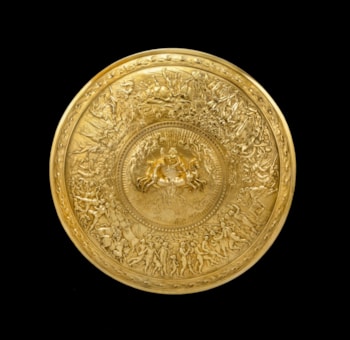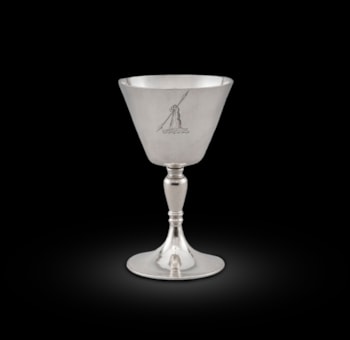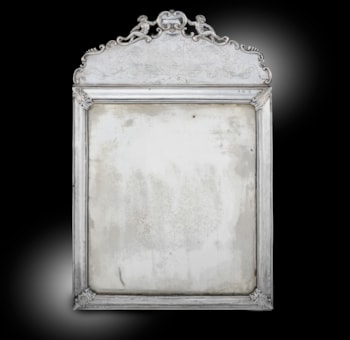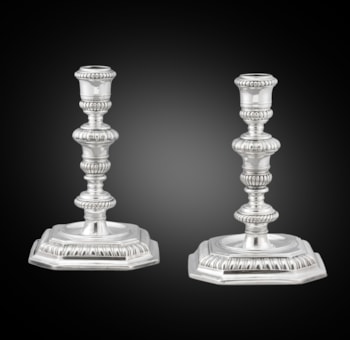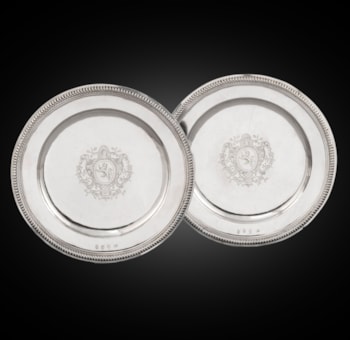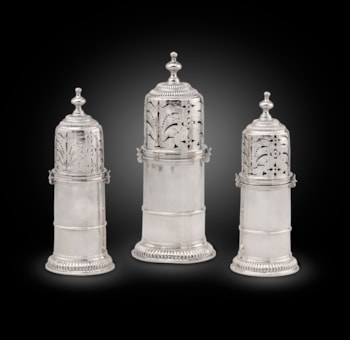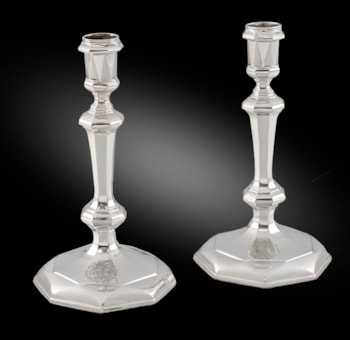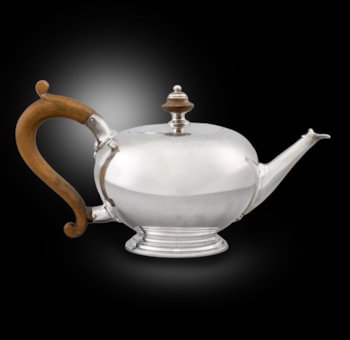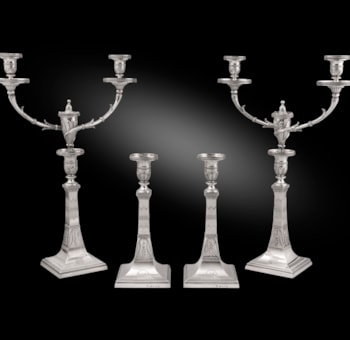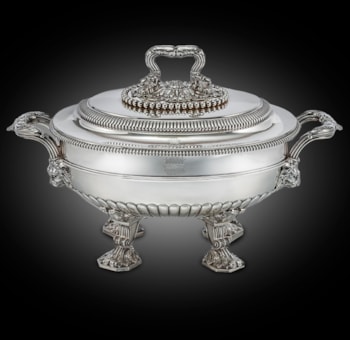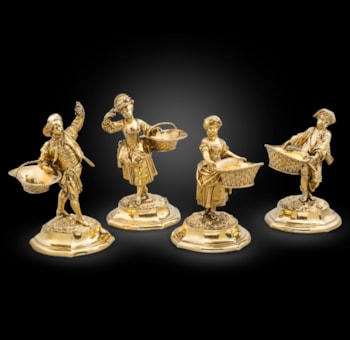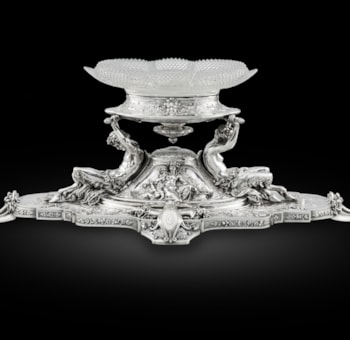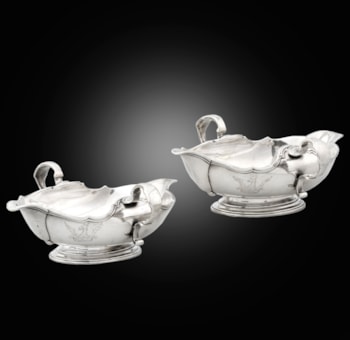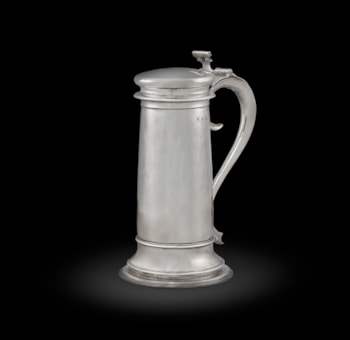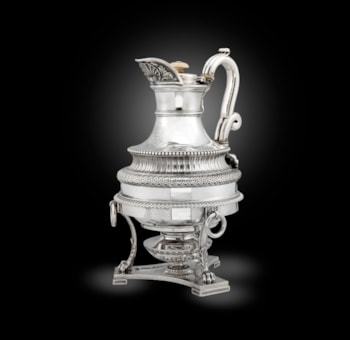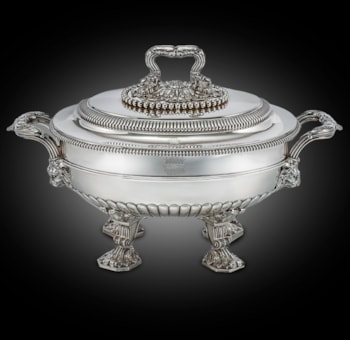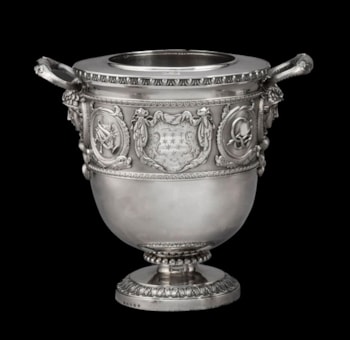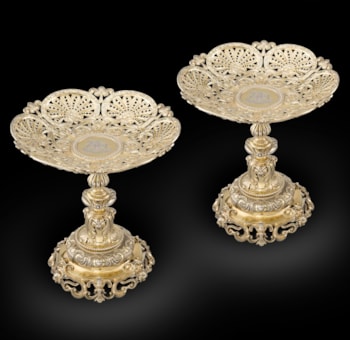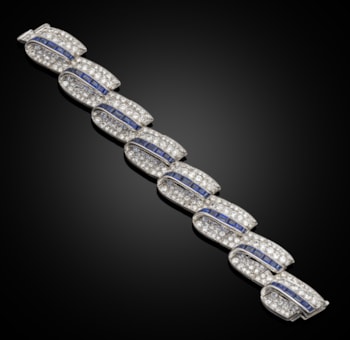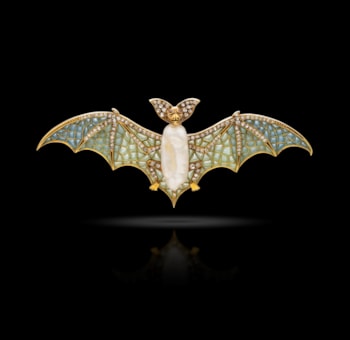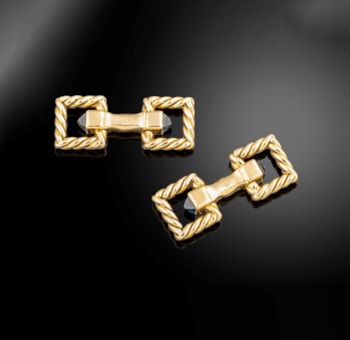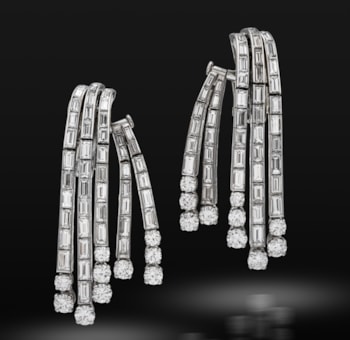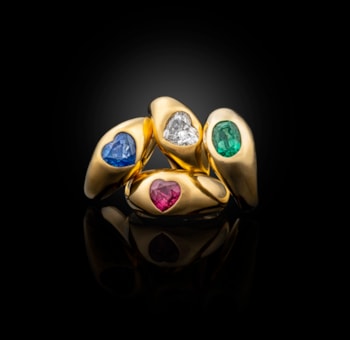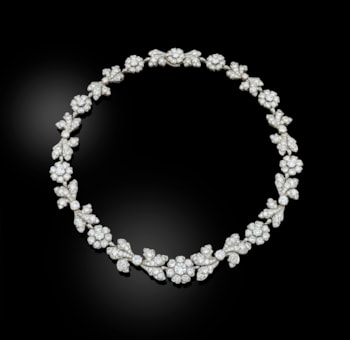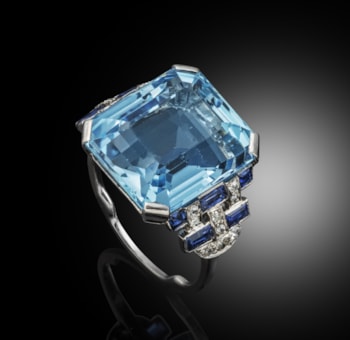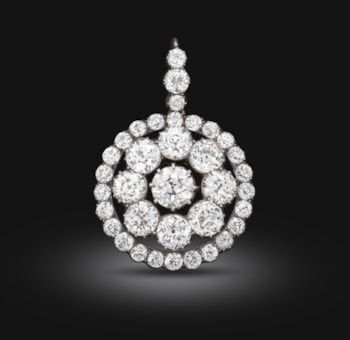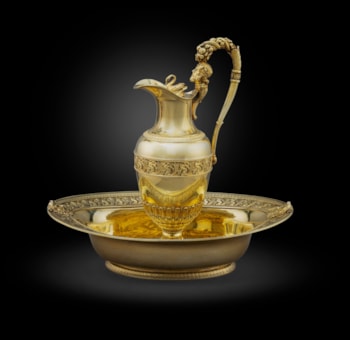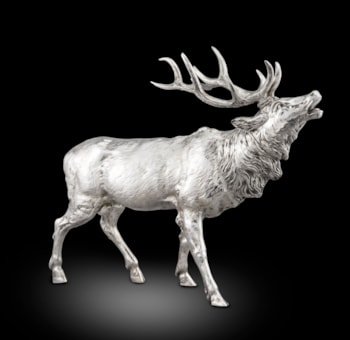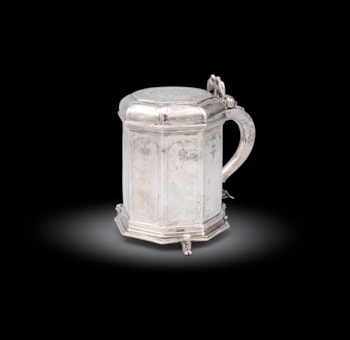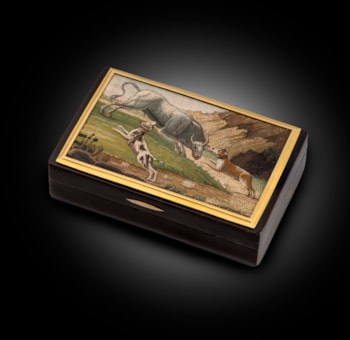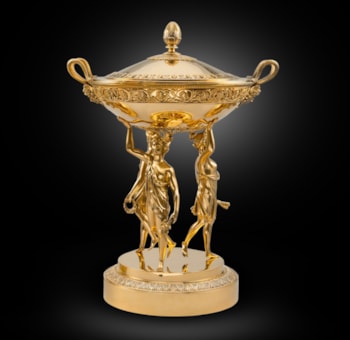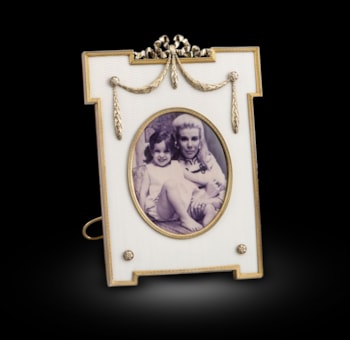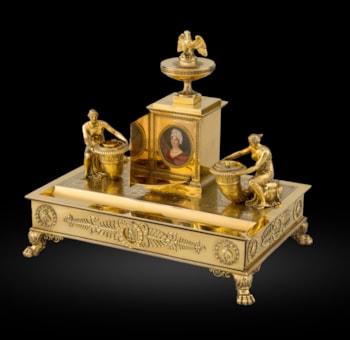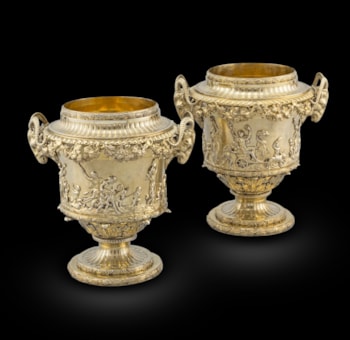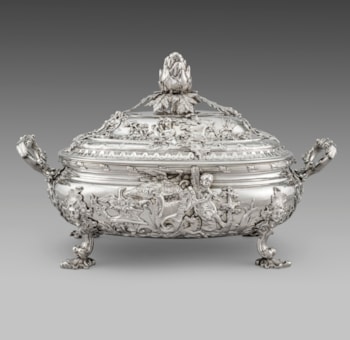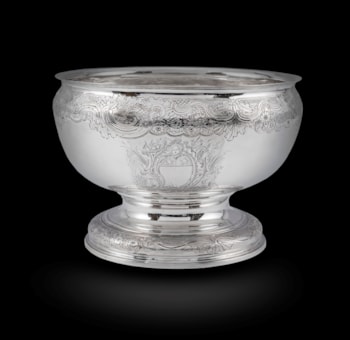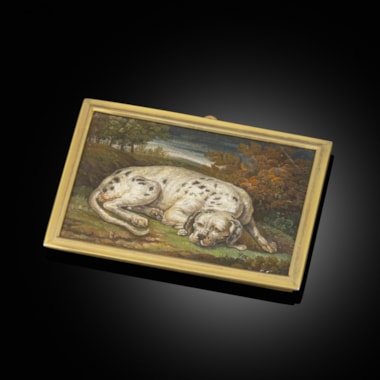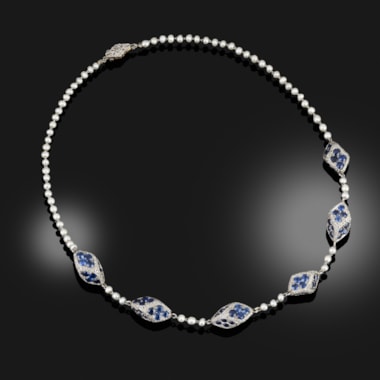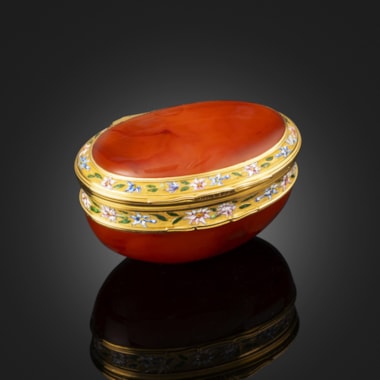Thomas Heming was the son of a Midlands merchant and was apprenticed in 1738 to the goldsmith Edmund Bodington, but on the same day was turned over to Peter Archambo. A. G. Grimwade, London Goldsmiths 1697-1837, London, 1982, p.543, describes his early work as showing “a French delicacy inherited from his refinement of execution which is unquestionably inherited from his master Archambo”. He registered his first mark in 1745 and soon acquired many good clients including John, 3rd Earl of Bute, for whom he was to supply large quantities of plate. Most importantly for Heming, it was Bute’s relationship with George, Prince of Wales, later George III, that was to lead to Heming's appointment in 1760 Principal Goldsmith to the King. He was to hold this post until 1782, when he was forced to resign after a malicious campaign to discredit him through accusations of excessive charges. Bank accounts at Messers Campbell and Coutts record the separate account administered by Bute which was used for the purchase of the plate for the King. A payment of 1,000 is recorded on 11 July 1761 to Thomas Heming.
Two further examples of this distinctive model, also by Heming, were sold Christie's London, 19 October 1988, lot 162 and Christie's New York, 22 April 1993, lot 73.
The son of a Midlands merchant, Thomas Heming was apprenticed to Edmund Bodington on March 7, 1738, and turned over on the same day to the Huguenot goldsmith Peter Archambo. He registered his first mark in June 1745; in 1760 he was appointed principal goldsmith to King George III, in which capacity he was responsible for supplying regalia and plate required for the coronation. Heming held this appointment until 1782, when he was ousted after an investigation into his apparently excessive charges. Grimwade (1976, p. 543) comments that "some of his earlier surviving pieces in the Royal collection show a French delicacy of taste and refinement of execution which is unquestionably inherited from his master Archambo." Among Heming's outstanding works are a silver-gilt toilet service made for Queen Caroline of Denmark in 1766 (Dankse Kunstidustrimuseum, Copenhagen; Hernmarck 1977, pl. 727) and a wine cistern of 1770, made for Speaker Brownlow (Belton House, Lincolnshire; Grimwade 1974, pl. 12).
You May Also Like




